Foundation Year
The English curriculum is built around the three interrelated strands of language, literature and literacy. Teaching and learning programs should balance and integrate all three strands. Together, the three strands focus on developing students' knowledge, understanding and skills in listening, reading, viewing, speaking, writing and creating. Learning in English builds on concepts, skills and processes developed in earlier years, and teachers will develop and strengthen these as needed.
In the Foundation year, students communicate with peers, teachers, known adults and students from other classes.
Students engage with a variety of texts for enjoyment. They listen to, read and view spoken, written and multimodal texts in which the primary purpose is to entertain, as well as some texts designed to inform. These include traditional oral texts, picture books, various types of stories, rhyming verse, poetry, non-fiction, film, multimodal texts and dramatic performances. They participate in shared reading, viewing and storytelling using a range of literary texts, and recognise the entertaining nature of literature.
The range of literary texts for Foundation to Year 10 comprises Australian literature, including the oral narrative traditions of Aboriginal and Torres Strait Islander Peoples, as well as the contemporary literature of these two cultural groups, and classic and contemporary world literature, including texts from and about Asia. Literary texts that support and extend Foundation students as beginner readers include decodable and predictable texts that range from caption books to books with one or more sentences per page. These texts involve straightforward sequences of events and everyday happenings with recognisable, realistic or imaginary characters. Informative texts present a small amount of new content about familiar topics of interest; a small range of language features, including simple and compound sentences; mostly familiar vocabulary, known, high-frequency words and single-syllable words that can be decoded phonically, and illustrations that strongly support the printed text.
Students create a range of imaginative, informative and persuasive texts including pictorial representations, short statements, performances, recounts and poetry.
(source: www.australiancurriculum.edu.au)
Achievement Standard
Receptive modes (listening, reading and viewing)
By the end of the Foundation year, students use predicting and questioning strategies to make meaning from texts. They recall one or two events from texts with familiar topics. They understand that there are different types of texts and that these can have similar characteristics. They identify connections between texts and their personal experience.
They read short, decodable and predictable texts with familiar vocabulary and supportive images, drawing on their developing knowledge of concepts of print, sounds and letters and decoding and self-monitoring strategies. They recognise the letters of the English alphabet, in upper and lower case and know and use the most common sounds represented by most letters. They read high-frequency words and blend sounds orally to read consonant-vowel-consonant words. They use appropriate interaction skills to listen and respond to others in a familiar environment. They listen for rhyme, letter patterns and sounds in words.
Productive modes (speaking, writing and creating)
Students understand that their texts can reflect their own experiences. They identify and describe likes and dislikes about familiar texts, objects, characters and events.
In informal group and whole class settings, students communicate clearly. They retell events and experiences with peers and known adults. They identify and use rhyme, and orally blend and segment sounds in words. When writing, students use familiar words and phrases and images to convey ideas. Their writing shows evidence of letter and sound knowledge, beginning writing behaviours and experimentation with capital letters and full stops. They correctly form known upper- and lower-case letters.
(source: www.australiancurriculum.edu.au)
- Plus Plan
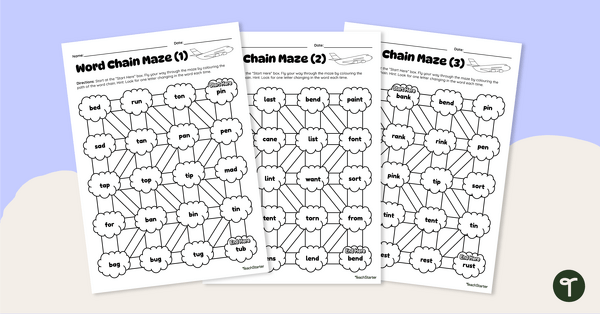
Word Chain Mazes - Worksheets
Colour a path through the maze by identifying the changing phoneme to create a continuous word chain.
- Plus Plan
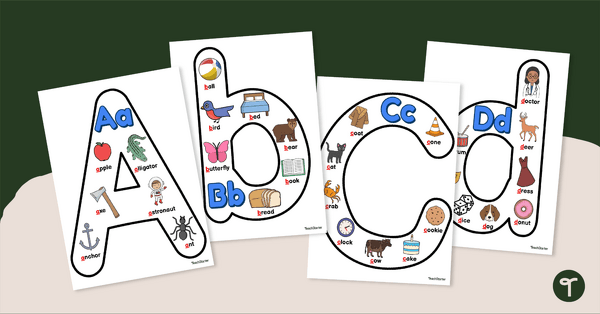
Alphabet Display (Letters and Images)
Display these lowercase and uppercase letter posters with images that begin with each letter.
- Plus Plan
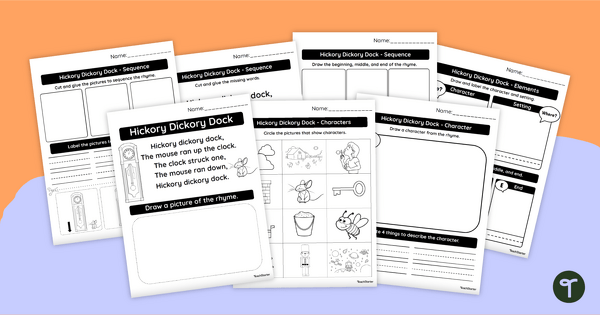
Narrative Features Worksheets - Hickory Dickory Dock
Identify characters, settings and parts of a story with early years reading worksheets featuring the Hickory Dickory Dock nursery rhyme.
- Plus Plan

Narrative Features Teaching Presentation - Hickory Dickory Dock
Engage young readers in texts and discover parts of a story with an interactive version of Hickory Dickory Dock.
- Plus Plan
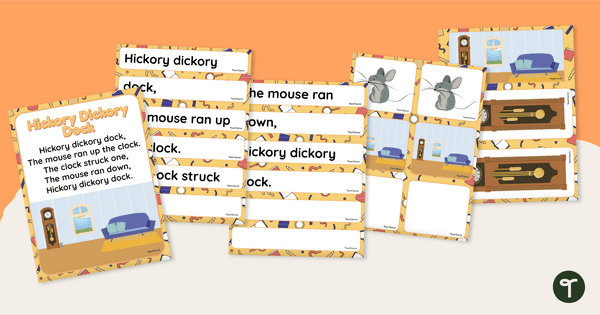
Hickory Dickory Dock Sequencing Activity Cards
Read and retell the story found within the nursery rhyme Hickory Dickory Dock with a set of retell sequencing cards.
- Plus Plan
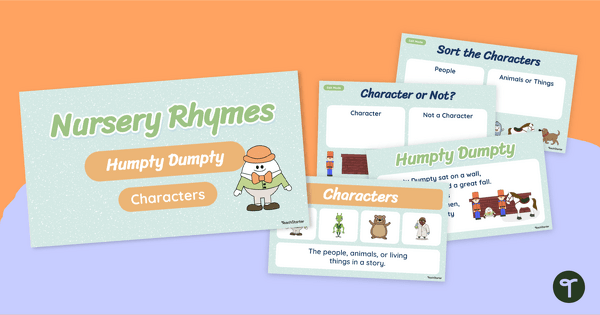
Narrative Characters Teaching Presentation - Humpty Dumpty
Engage young readers in texts and learn about characters with an instructional slide deck featuring the Humpty Dumpty rhyme.
- Plus Plan

Pirate-Themed Editable Desk Name Plate
Help your students feel at home on the first day of a new school year with these customisable desk name plates to match your classroom theme.
- Plus Plan
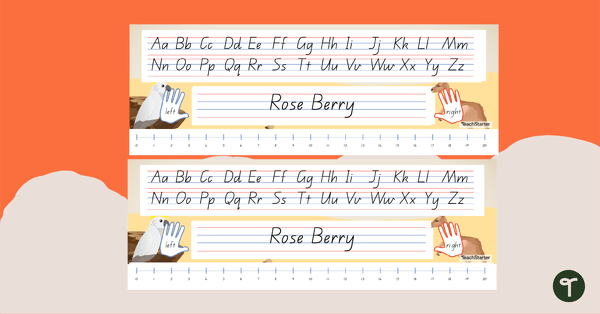
Australian Animal-Themed Editable Desk Name Plates
Create individualised desk name plates using this editable Australian Animal-themed desk name plate template.
- Plus Plan
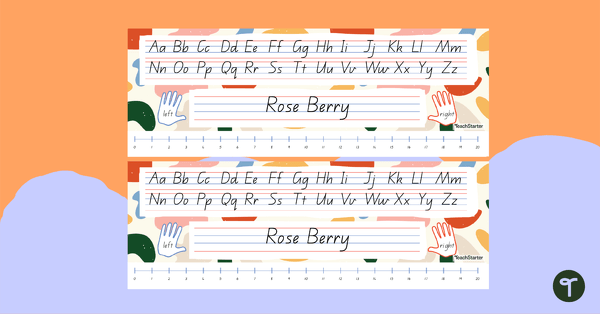
Abstract Pattern-Themed Desk Name Plates
Customise and edit these fun Abstract Pattern desk name plates for students in your class.
- Plus Plan
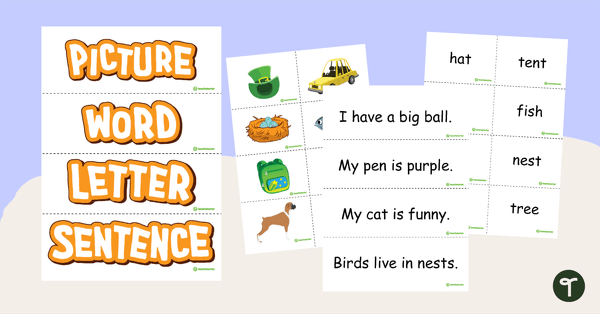
Picture, Letter, Word, Sentence – Classroom Display
A classroom display to help students distinguish between pictures, letters, words and sentences.
- Plus Plan
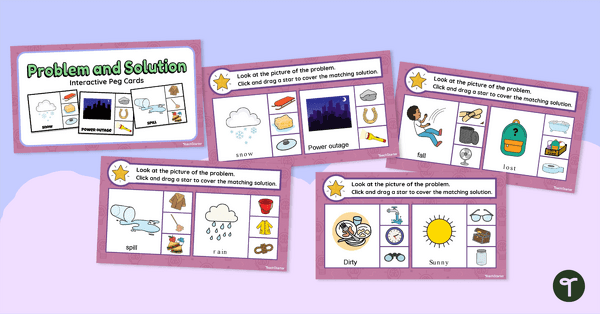
Problem and Solution Interactive Peg Cards
Practise identifying problems and solutions with an interactive peg card activity.
- Free Plan
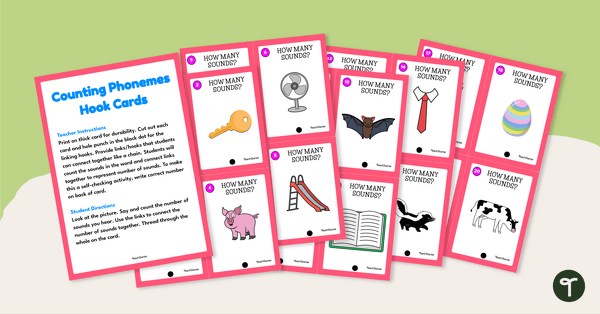
Phoneme Segmentation - Count and Hook Cards
Help students gain mastery in phoneme segmentation with these hands-on count and hook task cards.
- Plus Plan

I Can Count Sounds! - Phoneme Segmentation Worksheets
Practise phonemic segmentation of words with 2, 3 and 4 phonemes with this set of differentiated phonics worksheets.
- Plus Plan
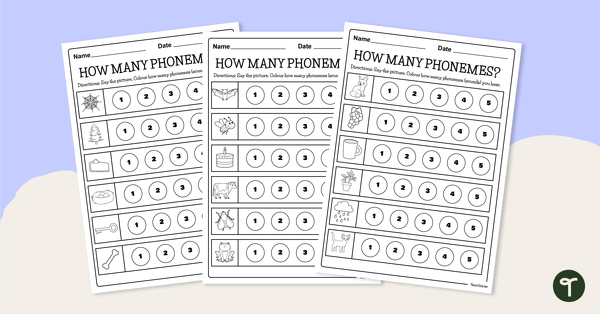
How Many Phonemes? Worksheets
Practise counting the number of phonemes in common words with the set of five phonics worksheets.
- Plus Plan
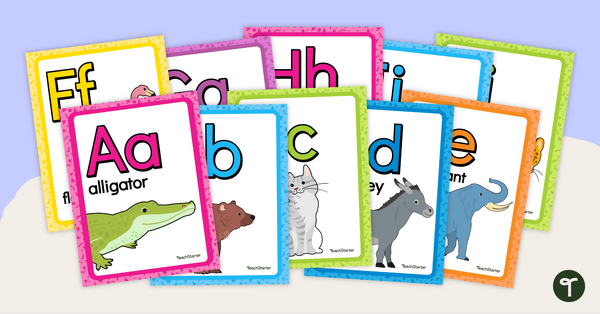
Rainbow Alphabet Display - Animals
Display these rainbow-themed alphabet posters with animals in your classroom.
- Plus Plan
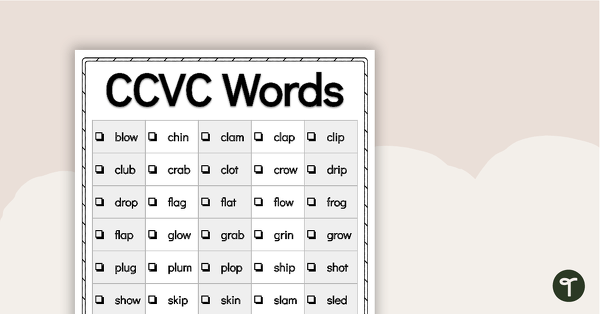
Word Study List - CCVC Words
Introduce and explore words containing the consonant-consonant-vowel-consonant pattern with this extensive list of CCVC words.
- Plus Plan
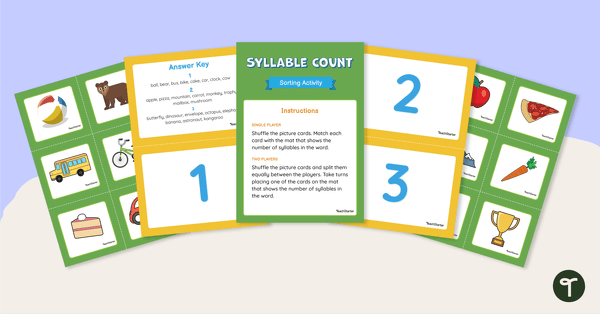
How Many Syllables? Sorting Activity
Practise segmenting and counting syllables in words with this set of 24 picture sorting cards.
- Plus Plan
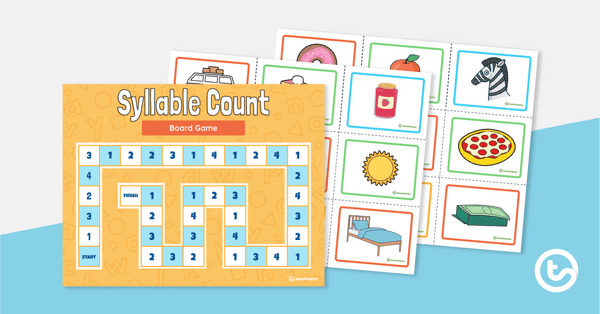
Syllable Count Board Game
Segment and count up to 4 syllables with this game board and set of 33 picture cards.
- Plus Plan
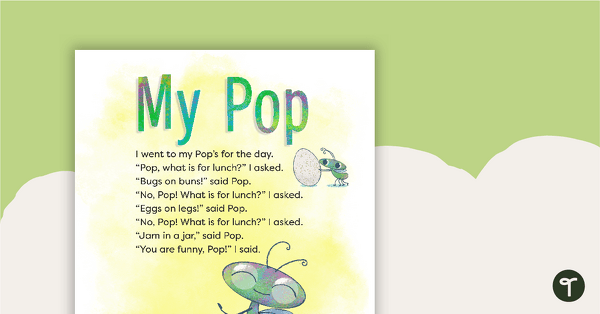
My Pop! - Read and Respond Worksheet
A cute narrative with accompanying worksheet.
- Plus Plan
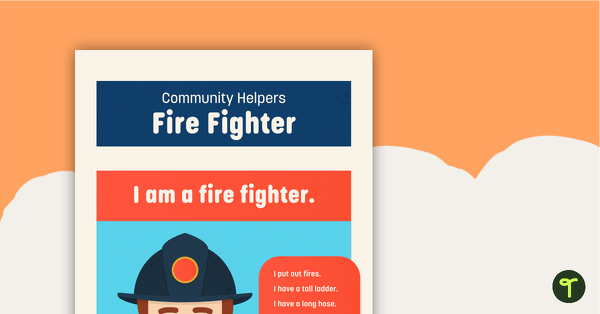
Community Helpers: Fire Fighter – Comprehension Worksheet
A comprehension worksheet for an article from the Foundation magazine (Issue 3).
- Plus Plan
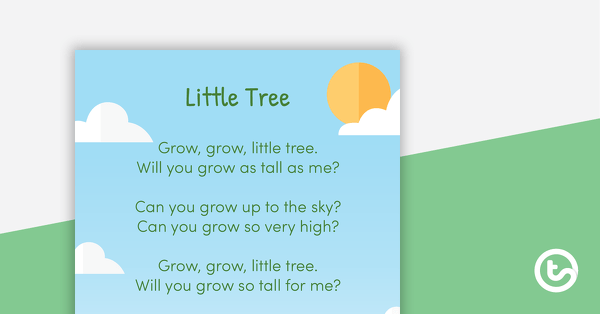
Little Tree (Poem) – Worksheet
A comprehension worksheet for a poem from the Foundation magazine (Issue 1).
- Plus Plan

A Colourful World (Poem) – Worksheet
A comprehension worksheet for a poem from the Foundation magazine (Issue 2).
- Plus Plan
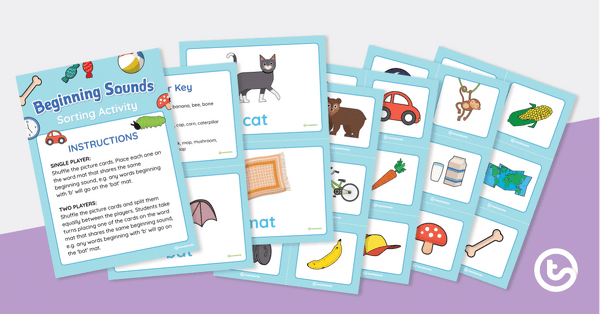
Beginning Sounds Sorting Activity
Practise identifying beginning sounds of words by sorting this set of 24 picture cards.
- Plus Plan
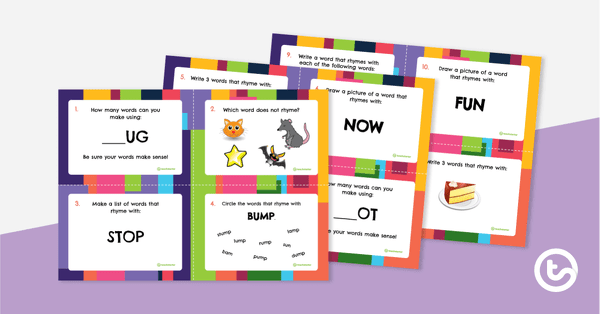
Rhyming Task Cards
A set of 12 task cards to practice rhyming.
- Plus Plan
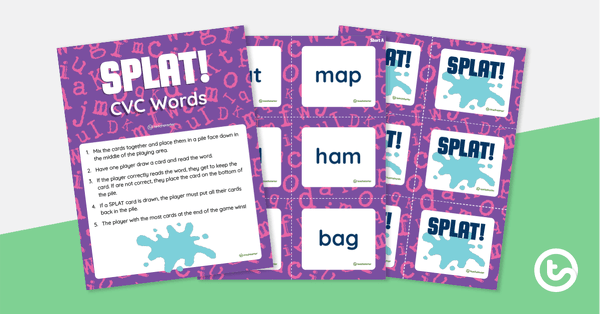
SPLAT! CVC Word Game
A set of 36 task cards to practise decoding and reading 3-letter words.
- Plus Plan
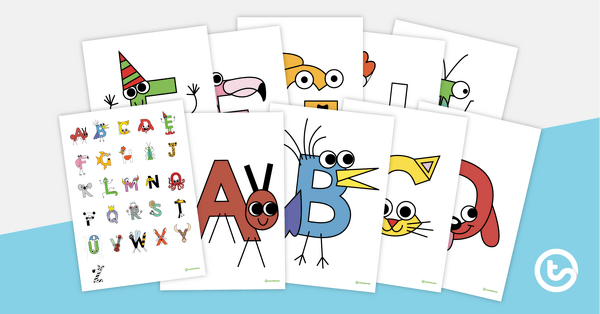
Alphabet Craft Display Posters
Letter craft posters for each letter of the alphabet.
- Free Plan
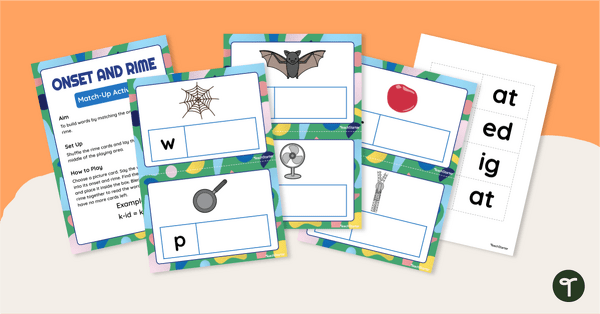
Onset and Rime Match-Up Activity
Practise building words by matching the onset and the rime using this match up activity.
- Plus Plan
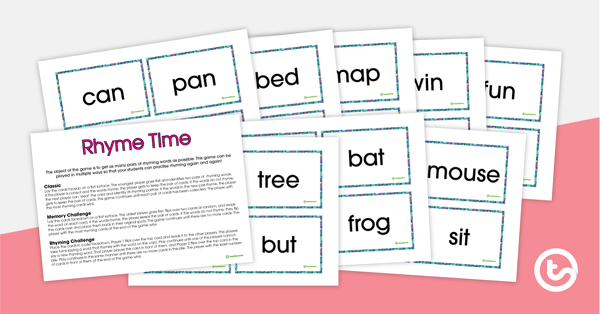
Rhyme Time – Match-Up Activity
A set of 32 match-up cards for students to practise rhyming.
- Plus Plan
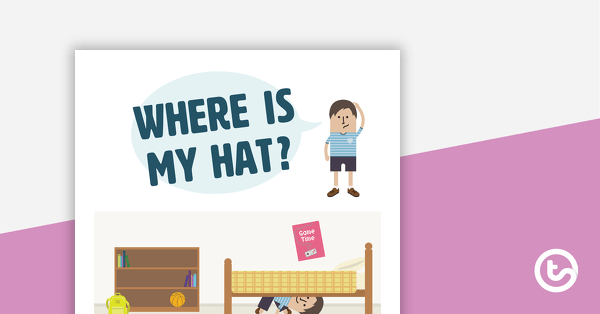
Where Is My Hat? – Worksheet
A comprehension worksheet for a comic from the Foundation magazine (Issue 1).
- Plus Plan
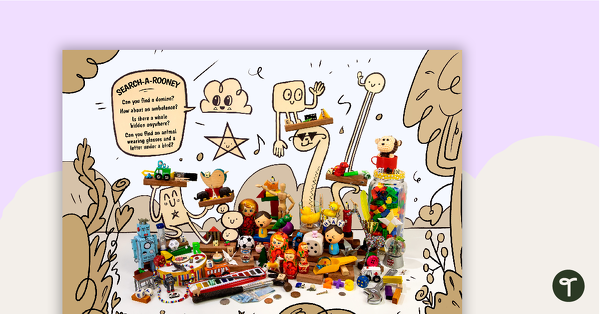
Search-a-Rooney 1 – Comprehension Worksheet
A comprehension worksheet for a image stimulus poster where students need to locate objects and characters.
- Plus Plan
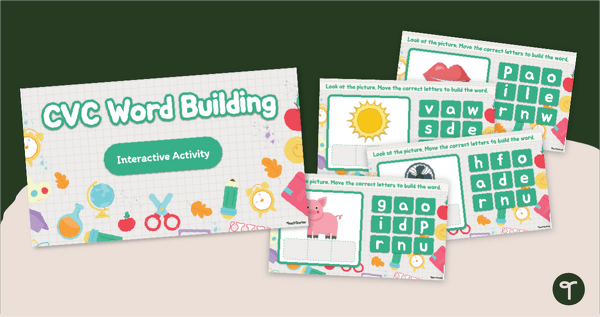
CVC Word Building Activity
Practise building CVC words with this 25 slide interactive activity.
- Plus Plan
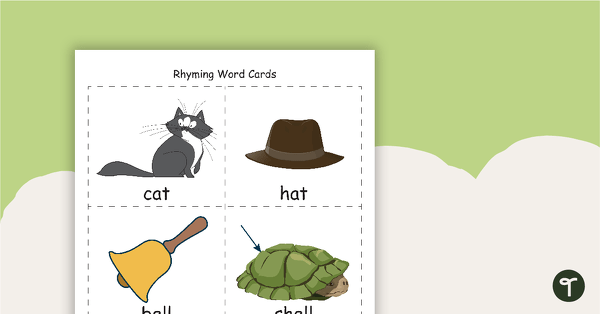
Rhyming Word Cards
A set of 30 picture cards that can be used to help consolidate students' knowledge of rhyming words.